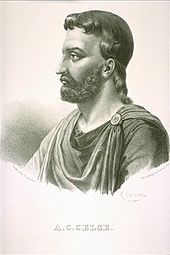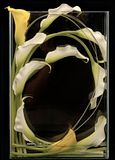British physicians traveled to India to see rhinoplasties being performed by native methods. Reports on Indian rhinoplasty performed by a Kumhar vaidya were published in the Gentleman's Magazine by 1794. Joseph Constantine Carpue spent 20 years in India studying local plastic surgery methods. Carpue was able to perform the first major surgery in the Western world by 1815. Instruments described in the Sushruta Samhita were further modified in the Western world.
In 1465, Sabuncuoglu's book, description, and classification of hypospadias was more informative and up to date. Localization of urethral meatus was described in detail. Sabuncuoglu also detailed the description and classification of ambiguous genitalia.[citation needed] In mid-15th century Europe, Heinrich von Pfolspeundt described a process "to make a new nose for one who lacks it entirely, and the dogs have devoured it" by removing skin from the back of the arm and suturing it in place. However, because of the dangers associated with surgery in any form, especially that involving the head or face, it was not until the 19th and 20th centuries that such surgery became common.
Up until the techniques of anesthesia became established, surgeries involving healthy tissues involved great pain. Infection from surgery was reduced by the introduction of sterile techniques and disinfectants. The invention and use of antibiotics, beginning with sulfa drugs and penicillin, was another step in making elective surgery possible.
In 1792, Chopart performed operative procedure on a lip using a flap from the neck. In 1814, Joseph Carpue successfully performed operative procedure on a British military officer who had lost his nose to the toxic effects of mercury treatments. In 1818, German surgeon Carl Ferdinand von Graefe published his major work entitled Rhinoplastik. Von Graefe modified the Italian method using a free skin graft from the arm instead of the original delayed pedicle flap.
The first American plastic surgeon was John Peter Mettauer, who, in 1827, performed the first cleft palate operation with instruments that he designed himself. In 1845, Johann Friedrich Dieffenbach wrote a comprehensive text on rhinoplasty, entitled Operative Chirurgie, and introduced the concept of reoperation to improve the cosmetic appearance of the reconstructed nose.
In 1891, American otorhinolaryngologist John Roe presented an example of his work, a young woman on whom he reduced a dorsal nasal hump for cosmetic indications. In 1892, Robert Weir experimented unsuccessfully with xenografts (duck sternum) in the reconstruction of sunken noses. In 1896, James Israel, a urological surgeon from Germany, and in 1889 George Monks of the United States each described the successful use of heterogeneous free-bone grafting to reconstruct saddle nose defects. In 1898, Jacques Joseph, the German orthopaedic-trained surgeon, published his first account of reduction rhinoplasty. In 1928, Jacques Joseph published Nasenplastik und Sonstige Gesichtsplastik.
20th century
In World War I, a New Zealand otolaryngologist working in London, Harold Gillies, developed many of the techniques of modern plastic surgery in caring for soldiers suffering from disfiguring facial injuries. His work was expanded upon during World War II by his cousin and former student Archibald McIndoe, who pioneered treatments for RAF aircrew suffering from severe burns. McIndoe's radical, experimental treatments, led to the formation of the Guinea Pig Club. In 1946, Gillies carried out the first female-to-male sex reassignment surgery.Plastic surgery, as a specialty, evolved remarkably during the 20th century in the United States. One of the founders of the specialty, Vilray Blair, was the first chief of the Division of Plastic and Reconstructive Surgery at Washington University in St. Louis, Missouri. In one of his many areas of clinical expertise, Blair treated World War I soldiers with complex maxillofacial injuries, and his paper on "Reconstructive Surgery of the Face" set the standard for craniofacial reconstruction.










































































































